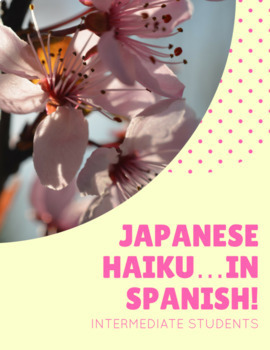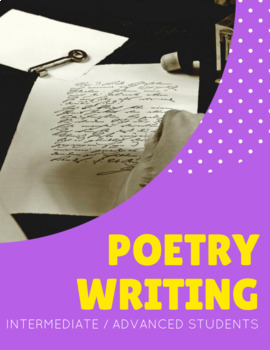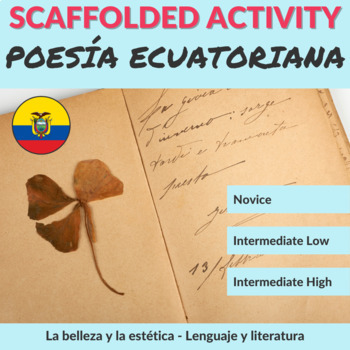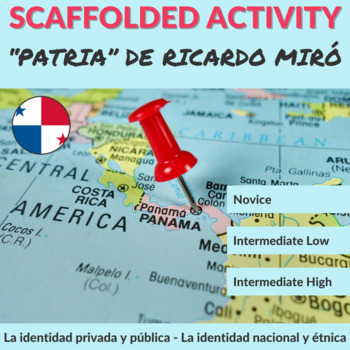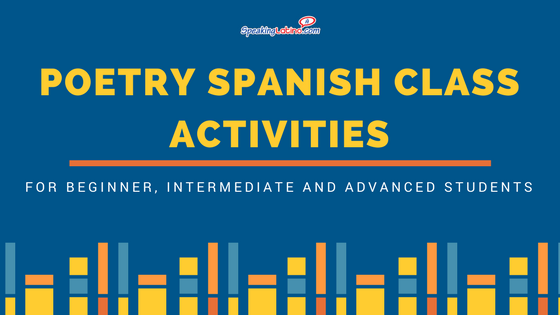
Expand your students’ cultural knowledge by introducing them to Spanish-speaking poets and their poetry (National Poetry Month in April is a great time to begin). You’ll find a few activities at the end of this article to capture your students’ imaginations and who knows… your students just might find poetry more interesting than they expected! It’s a great tool to engage them in language learning without your typical textbooks and worksheets.
Why Teach Poetry in Spanish Class?
As a teaching tool, poetry offers students a way to make connections between language and emotion, which can lead to greater insight into people and places. These connections mean that poetry has a natural role in Spanish class, as learning any foreign language is a richer experience for students when the language is placed in some kind of relatable context, like the feelings described in poetry.
As well, studying poetry encourages students to look more closely at the language and develop analytical skills. This kind of academic practice helps students develop a foundation from which different kinds of learning can take place. And finally, poetry is a beautiful and important piece of culture, no matter where you are from or what language you speak. By exposing your students to poetry in Spanish, you are giving them a piece of the poet’s individual culture.
How to Include Poetry in Your Spanish Lesson Plans
When introducing poetry to your students in Spanish class, remind them of all the times you emphasize correct pronunciation and correct placement of emphasis on certain syllables. Explain that these practical matters are important both to successful communication in Spanish and to poetry in general. This discussion around familiar topics will give students more confidence when starting with poetry in Spanish class, and you will get a glimpse into their prior knowledge which will help you guide them along a new area of study.
Here are some ways to remind students of what they already know about poetry in Spanish:
- Draw your students’ attention to the rhythm and music of the Spanish language whenever you speak in Spanish or ask them to speak in Spanish. Every time they pronounce a word in Spanish, they are creating sounds and meanings that are unique to the language, and recognizing these sounds is integral to the appreciation of poetry.
- Bring in songs in Spanish to play in class. Music is often important to young people, and some students may recognize more mainstream songs like the Christmas song Feliz Navidad and the Cuban patriotic song Guantanamera which is also popular with English-speaking listeners. If your students are at an intermediate or advanced level, you can even distribute the song lyrics in Spanish for them to read, emphasizing that songwriting is a kind of poetry.
- Ask students to complete easily achievable tasks like listing words in Spanish that rhyme, or ones that are alliterative. Make connections to other poetry terms like metaphor and meter; they will have likely have already learned these in English class so they may be able to apply what they remember to poetry written in Spanish.
Here is a list of Spanish-speaking poets you and your students can explore together, as well as their country of origin and the time period in which the poets lived and wrote:
- Octavio Paz, Mexico, 1914-1998
- Rubén Darío, Nicaragua, 1867-1916
- Rosario Ferré, Puerto Rico, 1938-2016
- Margarita Carrera, Guatemala, 1929-2018
- Federico García Lorca, Spain, 1898-1936
- Jose Luis Borges, Argentina, 1899-1986
3 Poetry Spanish Class Activities for Beginner, Intermediate, and Advanced Students
Below, you will find three different poetry activities that you can try, for example, during National Poetry Month. When introducing your students to Spanish-speaking poets and poems in Spanish, remind them that poetry, in a sense, has its own unique language. It looks different on the page than other forms of language, like a novel or a news article, and it sounds different too when you read it out loud.
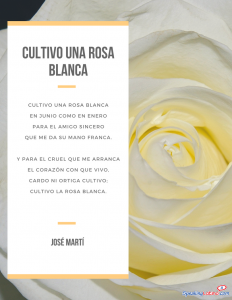
1. Rhyme: A Poetry Activity for Beginning Spanish-Speakers
Learning objective: Students will read out loud a poem by Cuban poet Jose Martí and identify rhyming words in the poem.
How to do this activity: Introduce the 19th-century Cuban poet, José Martí, with some brief biographical information as well as some historical detail about Cuba during the time of his life. If you played Guantanamera to the class, mention that the song was adapted from Marti’s poetry.
Tell students that they will need three different colored pens, highlighters, or markers during this exercise.
Distribute copies of the poem Cultivo una rosa blanca and define for students the different types of rhyme you will discuss:
a. eye rhyme (where words look as if they would rhyme, but don’t actually sound similar)
b. perfect rhyme (where the ending sounds of the words match perfectly)
c. internal rhyme (where words that rhyme exists within the line of poetry instead of at the end).
Ask students to read the poem silently to themselves once before you slowly read the poem out loud to them. As the students read the poem silently to themselves a second time, ask them to underline and color-code the different types of rhyme they observe in the poem.
As students share their responses; they may have different responses to this task, but as long as the rhymes they identify meet the definitions you presented in class, they are correct.
Finally, ask students to read the poem out loud together, in one voice, so that they can pronounce the words and experience the rhymes and the rhythm of the poem for themselves.
Discuss together the vocabulary of the poem, especially any words that might be new to them in Spanish and/or English, and then ask students what they think the poem might mean.
If you would like to extend this activity, try doing the same exercise with the English translation of the poem, and see if the English version helps your students to understand the poem,
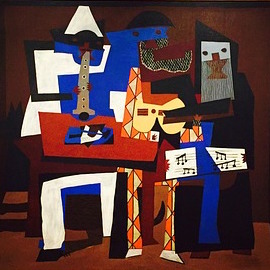
2. Imagery: A Poetry Activity for Intermediate Spanish-Speakers
Learning objective: Students will make connections between the visual imagery of Spanish artist and writer Pablo Picasso’s visual art and poetry.
How to do this activity: Start by showing students a few images of the work of the Spanish artist and writer Pablo Picasso. Students may recognize his most famous paintings and sculptures, so when you mention to students that Picasso was also a poet, emphasize that some artists can make beautiful things with words as well as colors and textures.
Give students a list of ten or fifteen relevant art vocabulary words that they can learn and apply to this activity in addition to their knowledge of color words, body words, and other adjectives and nouns.
Either project onto a wall of your classroom an image of Picasso’s famous painting Guernica or give the students paper copies of the painting. Ask them to describe one of the images you presented to them in five complete sentences using any variety of vocabulary words.
Then, after the students complete their sentences, distribute copies of Picasso’s poem 28 de noviembre XXXV. Ask students to read the poem silently to themselves, underlining phrases and images for the poem that echo any of the details in Guernica.
Discuss findings as a group, and finish the activity by asking a volunteer to read the poem out loud to the entire class.

3. Emotion: A Poetry Activity for Advanced Spanish-Speakers
Learning objective: Students will practice reading comprehension skills and discuss the connection between words and emotions while reading Soneto XLV by Chilean poet Pablo Neruda.
How to do this activity: Distribute copies of Neruda’s sonnet to students, and explain the structure and purpose of a sonnet as well as its popularity as a form of love poetry.
Read the poem out loud slowly while your students read the sonnet silently to themselves, underlining any phrases or word combinations that they find particularly evocative of emotion.
Give students time at the end of your reading to look up new words. Before discussing the words and phrases the students have selected, ask students to reflect on how the poem as a whole made them feel.
Ask students to write down a few notes in response to this question, and then ask them to look again at the words they underlined to make the connection.
You can extend this activity by asking them to write a personal response to the poem, or even by asking them to write a love poem of their own that answers or respond to Neruda’s poem.
If your students seem a bit reticent at discussing their feelings out loud, simply ask them to respond in writing for some extra writing practice in Spanish.
More Spanish Class Activities and Resources for National Poetry Month in April
 Introducing Poet Elizabeth Acevedo Sub-Plan for Intermediate Students
Introducing Poet Elizabeth Acevedo Sub-Plan for Intermediate Students
Students will read a brief article about Elizabeth Acevedo in English. They will discuss what they learn in pairs before writing a verse of poetry in English in pairs. For the rest of the class, or for homework, they will translate their verse into Spanish to turn in for credit.
 Japanese Haiku Sub-Plan for Intermediate Students
Japanese Haiku Sub-Plan for Intermediate Students
Students will know how to write a haiku poem and understand the rules of haiku-writing. Students will also have a deeper awareness of how syllables work within a Spanish word. Students will have practice writing with Spanish nature vocabulary, applying basic verb conjugations in the present tense to the lines of the poem.
 Poetry Writing Sub-Plan for Intermediate-Advanced Students
Poetry Writing Sub-Plan for Intermediate-Advanced Students
Students will understand the concept of rhyme schemes and apply their knowledge to examples of poetic language in both Spanish and English. The students will have the opportunity to write their own short verse following a rhyme scheme of their own selection, in Spanish, and then translate it to English.
 La Poesía Ecuatoriana Scaffolded Activities – La belleza y la estética – Lenguaje y literatura (Ecuador)
La Poesía Ecuatoriana Scaffolded Activities – La belleza y la estética – Lenguaje y literatura (Ecuador)
With this listening comprehension activity, students are introduced to some poets from Ecuador and work by listening to the poem Tu cabellera by Humberto Fierro.
 “Patria” de Ricardo Miró Scaffolded Activities – La identidad privada y pública – La identidad nacional y étnica (Panama)
“Patria” de Ricardo Miró Scaffolded Activities – La identidad privada y pública – La identidad nacional y étnica (Panama)
In this listening comprehension activity, students learn about Panamanian symbols and traditions by listening to a poem by Ricardo Miró.
Poet Biographies for Spanish 2, Spanish 3, and AP Spanish
These Google Slide biographies include a photo of the person, their name, country flag, biography, video, Fill-in-the-blank sentences (Práctica con frases), comprehension and discussion questions, extension activities, and a bibliography.
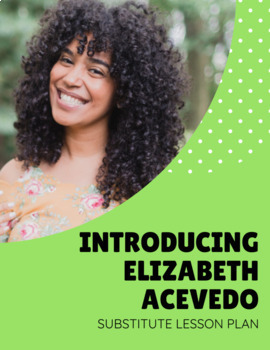 Introducing Poet Elizabeth Acevedo Sub-Plan for Intermediate Students
Introducing Poet Elizabeth Acevedo Sub-Plan for Intermediate Students